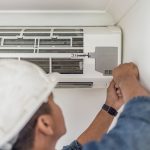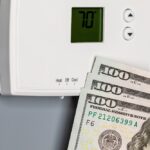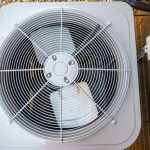What’s the Ideal Humidity Level for My Home?
Home heating and cooling systems are extremely beneficial, as long as they’re maintained and functioning properly. The heater and air conditioner work hard to keep indoor environments comfortable, but we mustn’t forget to check the humidity levels in our homes from time to time. The fact is, controlling the humidity inside your house is just as important to indoor comfort as controlling the temperature on the thermostat. If you don’t know how to check the humidity in your home yourself or would prefer that an expert do it, reach out to a professional for assistance.
So, what is your ideal home humidity level in Tampa, FL? Here’s what everyone needs to know about humidity as it relates to indoor air quality and comfort.
Ideal relative humidity level
Every homeowner or renter should have or consider getting a hydrometer. This small, handheld device measures temperature and relative humidity so you can maintain and ideal indoor relative humidity level. This instrument can be carried from room to room to get accurate measurements of the relative humidity throughout the house. Around 40 to 50 percent humidity in the summer is recommended, and 30 to 40 percent humidity in the winter to avoid condensation on windows and glass doors.
Indoor air quality
According to the U.S. Environmental Protection Agency (EPA), poor. indoor air quality is among the top environmental health threats. There are three components to healthy indoor air: it must be fresh, clean and have the proper humidity (less than 50 percent). Fresh air from outside is rich in oxygen and clears your home of stale, pollutant-filled air. It’s important to note that outside air is not necessarily clean air. All indoor air must be filtered to remove unhealthy allergens, particles and other contaminants. Maintaining relative humidity below 50 percent is an efficient method of dealing with airborne pollutants.
Telltale signs of high relative humidity
Having an indoor humidity that’s below 50 percent prevents dust mite infestations, mold and mildew growth and bacteria growth. A lower relative humidity also reduces the outgassing of VOCs. Unless you live in an arid climate, bouts of high humidity can create a host of problems for buildings and people. Symptoms of high humidity include the following:
- A musty odor inside your home, crawlspace or basement.
- Visible mold and/or mildew growth in your home, as well as noticeable condensation or water stains.
- Members of your household experiencing allergic reactions to mold and/or dust mites.
- Peeling wallpaper or blistering paint.
- A sticky or muggy feeling, even with the heater or air conditioner on.
When you’re able to maintain proper home humidity level in Tampa, FL, you reduce the chances of your home falling victim to mold and mildew growth, airborne bacteria and allergens. In addition to improved indoor air quality, your indoor environment will feel comfortable day and night, all year long.
If you suspect a faulty HVAC system or dirty ductwork, don’t hesitate to contact the experts at Kenny’s Air Conditioning & Heating Services, Inc. We are here to help 24/7—call us anytime!
More...
Categorised in: Humidity




